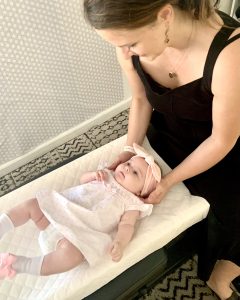You might be reading this article after a long day of work. You may be tired, lacking motivation, or finding that there aren’t enough hours in the day to fit in exercise. If so, you’re not alone. More than 60% of adults report not exercising for the recommended time of 150 minutes per week for a variety of reasons. Increasing work hours, daily demands of commuting, financial strain, and caring for loved ones often get put ahead of exercise. Additionally, there are a lot of exercise mediums to choose from. This can be overwhelming. You just want a workout that But what if you could get a workout – more importantly a functional workout – in less than an hour that leaves you stronger and more capable to perform your daily tasks? Let us introduce you to functional training.

What is Functional Training?
Functional training refers to exercises that are movements you perform in your daily life. One of our previous articles discussed the seven functional movements and their role in strengthening your whole body. These movements – the squat, hinge, lunge, push, pull, rotation and gait – are the foundation for functional training. These exercises can be combined to form compound movements, like a squat overhead press, that will work your whole body. Compound movements require multiple muscle groups and often require movements in multiple planes. This means you will work in moving forward, backward, side to side and rotate. Challenging your muscles in different directions improves balance, coordination and lowers your risk of injury. More importantly, this will train the daily movements you perform and allow you to function at a higher level.
 Why is Functional Training important?
Why is Functional Training important?
Think about the tasks you perform at home. You bend down to pick up your kids, you twist yourself out of the car after a long commute, you put groceries away on the top shelf. All of these require strength and coordination from multiple muscle groups in different directions. When you aren’t able to perform these movements safely and efficiently, this can create pain and lead to inactivity. Functional training is often more efficient than other workouts, which makes it easy and quick to perform. Instead of performing an exercise that targets one muscle, functional training utilizes multiple muscle groups in one movement.

What kind of movements will I perform with Functional Training?
What all does a functional workout entail? Take the push up. This engages the triceps, deltoid, pec major and minor muscles along with the core when performed correctly. This is a great upper body movement that engages multiple muscles. Similarly for the lower body, a lunge movement strengthens the glutes, hamstrings, quads, and calves. The core also works hard to keep you upright during the movement. The lunge can be combined with an overhead press type movement that engages the shoulder muscles. Another aspect of functional training is the endurance it requires. This can be tested in a jump squat. This movement engages your core and entire lower body while testing their strength and endurance. Functional training combines upper and lower body movements frequently and often performs them in cycles to ensure the body is always moving. This tests the endurance of each muscle and ensures they can function while fatigued.
How do I start?
If you’re still unsure how functional training can fit into your life, make an appointment with us at our Palo Alto or Santa Clara location to have all your questions answered. Custom Chiropractor is currently partnering with F45 Training North Sunnyvale and offering a free two week membership to current patients. F45 offers quick 45 minute class workouts that are functional and provide a great full body workout that improves strength and endurance. Give us a call at 408-248-8700 with questions regarding functional training or our partnership.






